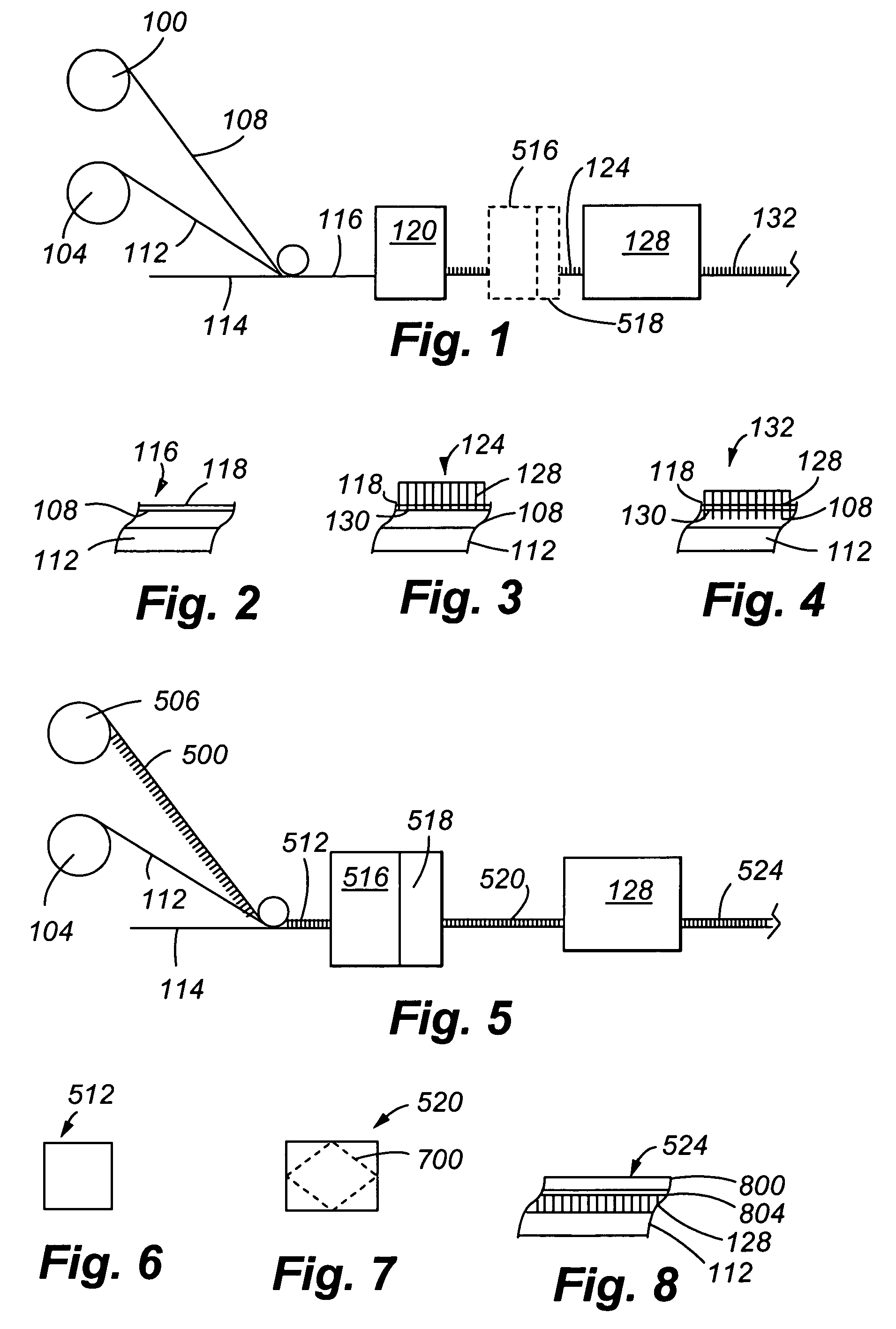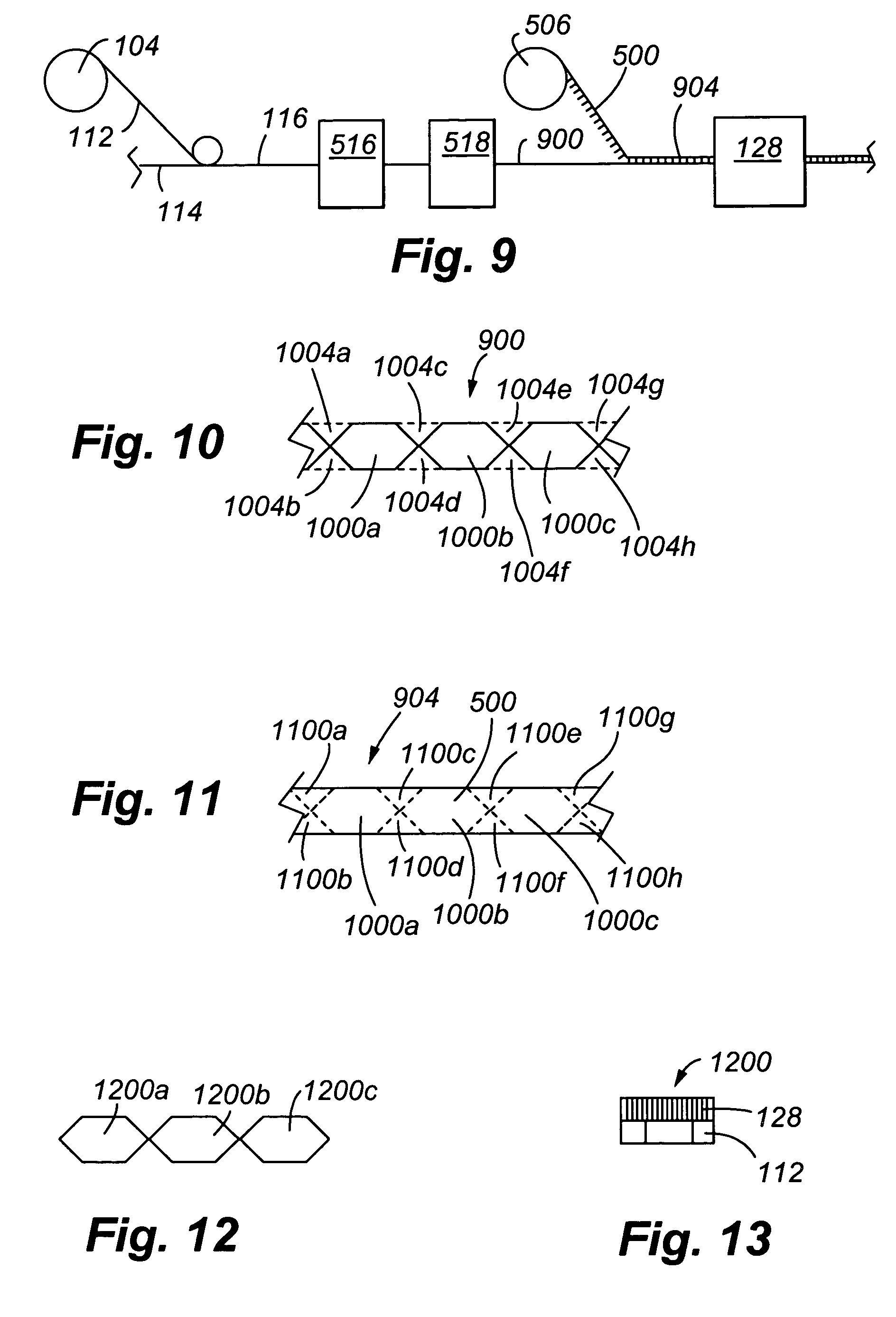Processes for precutting laminated flocked articles
a technology of laminated flocked articles and precutting equipment, which is applied in the field of decorative articles, can solve the problems of inability to meet the needs of customers, and inability to meet the needs of customers, and achieve the effect of reducing the number of cuts and adjusting the cutting devi
- Summary
- Abstract
- Description
- Claims
- Application Information
AI Technical Summary
Benefits of technology
Problems solved by technology
Method used
Image
Examples
first embodiment
[0027] Referring to FIGS. 1-5, a system for manufacturing a flocked article according to the present invention is depicted. The system includes a first roll 100 containing a permanent (pre-formed) adhesive film 108 and a second roll 104 containing a substrate film 112. The second roll 104 and substrate film 112 is omitted in certain applications. The pre-formed films 108 and / or 112 are contacted one on top of the other on a continuous running web line 114.
[0028] The adhesive film 108 can be any suitable adhesive film for the application. As will be appreciated, an “adhesive” is any substance, whether inorganic or organic, natural or synthetic, that is capable of bonding other substances together, typically by surface attachment. Examples of suitable adhesives include high temperature adhesives, such as polybenzimidazoles and silica-boric acid mixtures or cermets, hot-melt adhesives, thermoset adhesives, thermoplastic adhesives, and polyurethane. “Hot-melt adhesives” generally refer ...
second embodiment
[0040] the present invention will now be discussed with reference to FIGS. 5-8.
[0041] As in the prior embodiment, the system includes first and second rolls 506 and 104. The first roll contains a flocked transfer sheet 500 and the second roll the adhesive film 112. The flocked transfer sheet 500 includes a release sheet 800 and release adhesive 804.
[0042] The release sheet 800 can be any suitable transfer carrier that is formable and dimensionally stable with the flock. Examples of other types of suitable transfer carriers include plastic films. The sheet is preferably a discontinuous sheet or a running web line material. The carrier sheet or film has been found to assist in robotically feeding the mold insert or mold insert film into the forming tool and / or the mold itself. A vacuum is able to pick up the mold insert or mold insert film and transport and position the insert at a desired location in the forming tool / open mold. Other techniques to establish a vacuum connection inclu...
PUM
| Property | Measurement | Unit |
|---|---|---|
| length | aaaaa | aaaaa |
| length | aaaaa | aaaaa |
| length | aaaaa | aaaaa |
Abstract
Description
Claims
Application Information
 Login to View More
Login to View More - R&D
- Intellectual Property
- Life Sciences
- Materials
- Tech Scout
- Unparalleled Data Quality
- Higher Quality Content
- 60% Fewer Hallucinations
Browse by: Latest US Patents, China's latest patents, Technical Efficacy Thesaurus, Application Domain, Technology Topic, Popular Technical Reports.
© 2025 PatSnap. All rights reserved.Legal|Privacy policy|Modern Slavery Act Transparency Statement|Sitemap|About US| Contact US: help@patsnap.com



